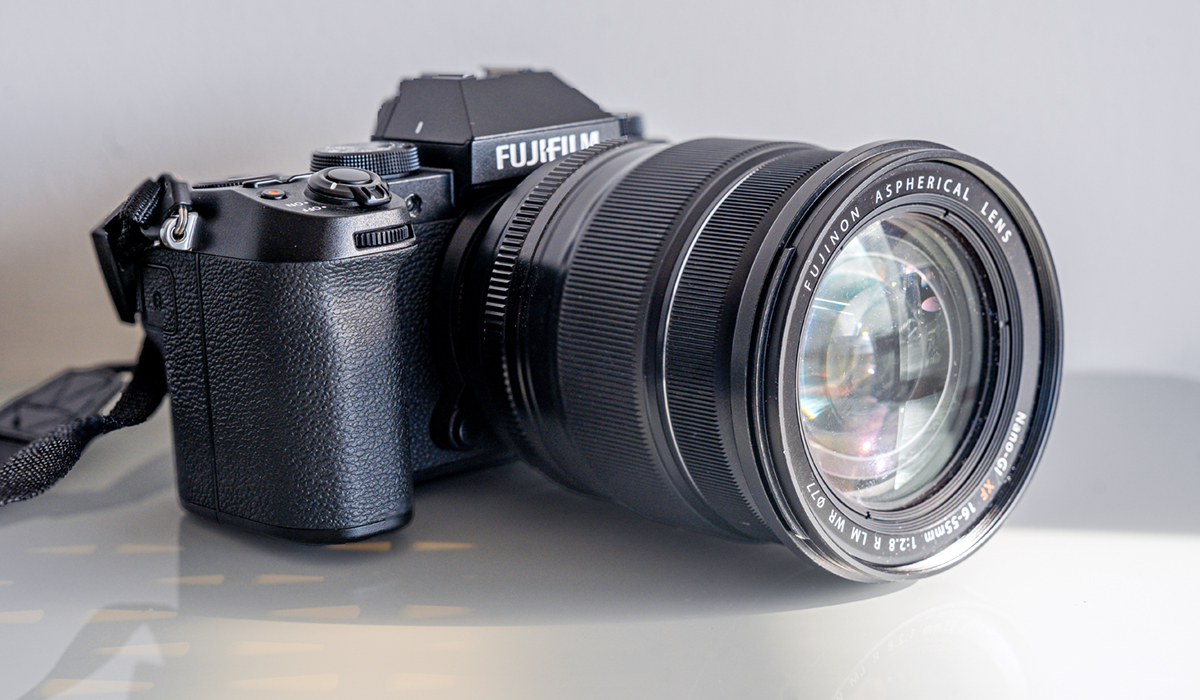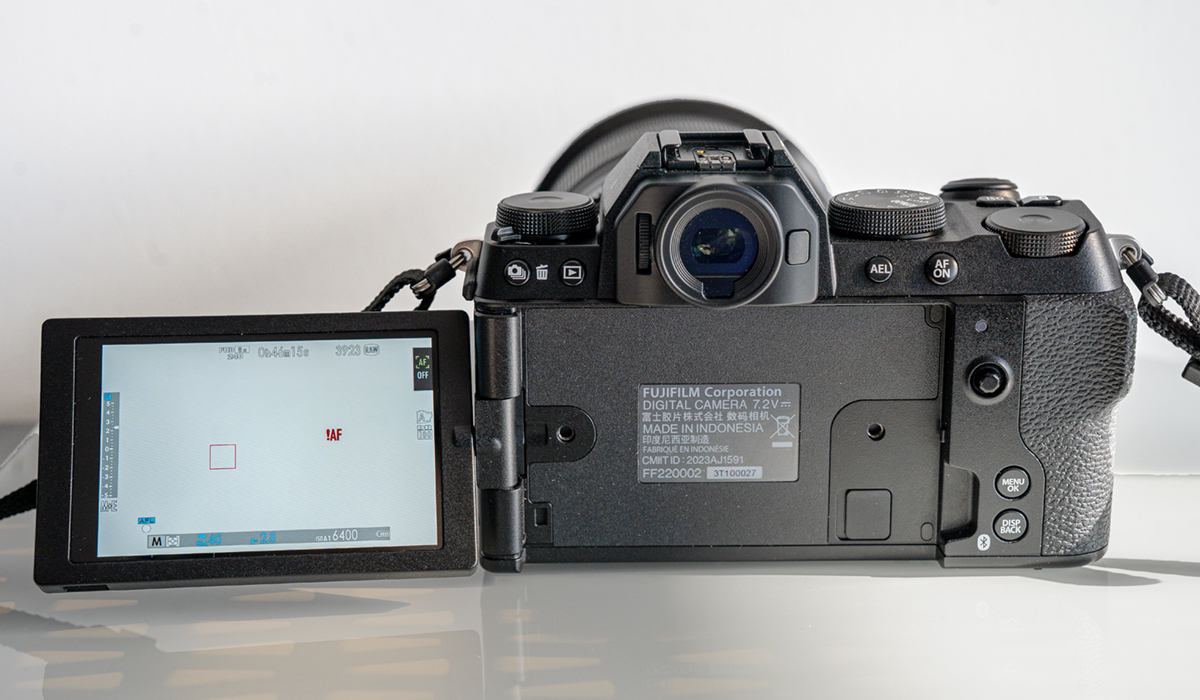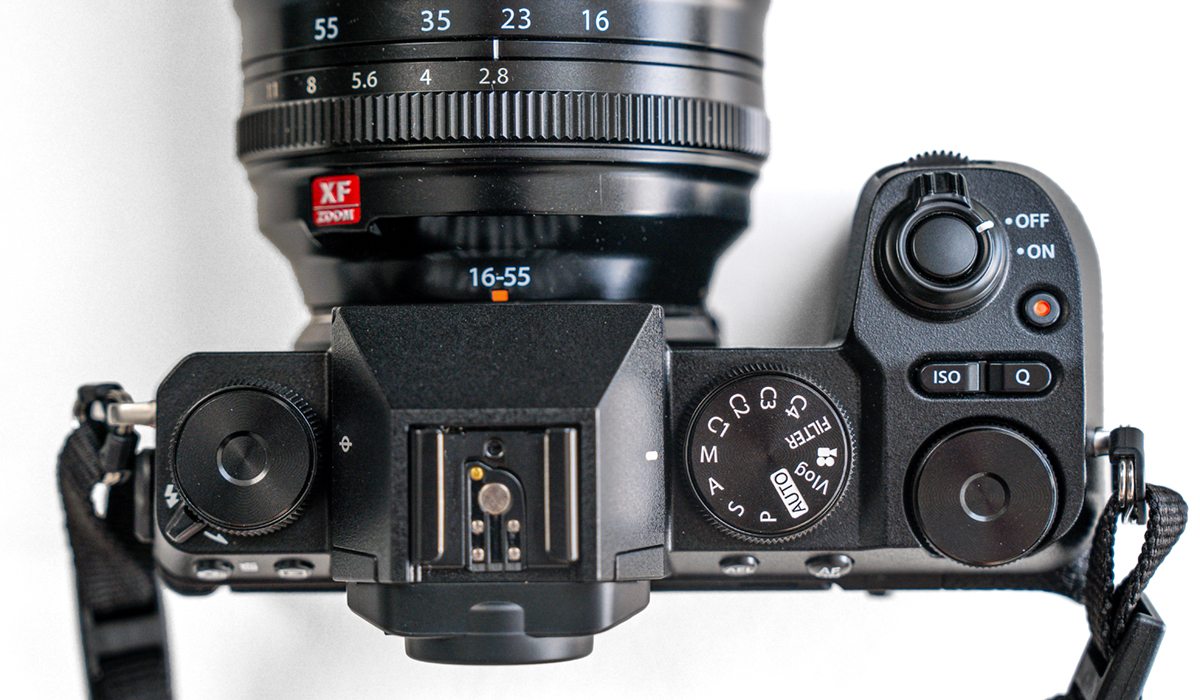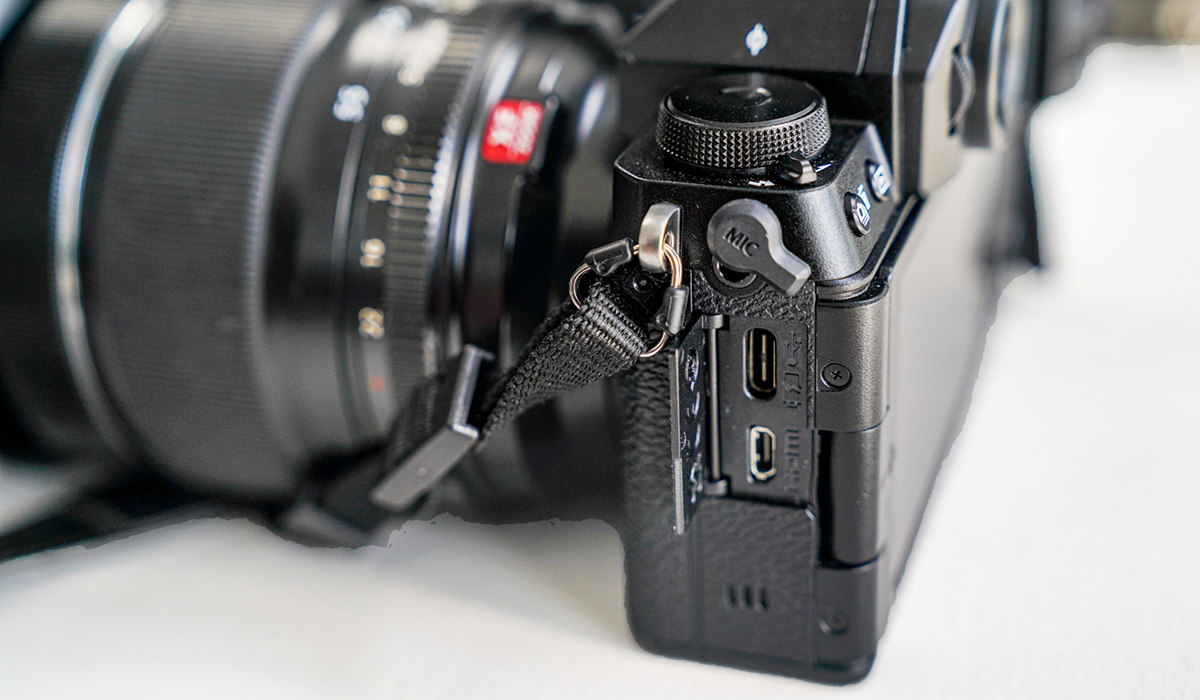
If you’re in the market for a mirrorless camera that can deliver excellent performance, yet is also highly accessible, then the Fujifilm X-S20 (coming soon) might fit just right. This camera is not among Fuji’s flagships, so its mid-range capabilities may suggest something’s lacking. Results, however, suggest otherwise, as there’s plenty to work with when capturing images with it.
The X-S20 is a direct successor to the X-S10, albeit with a broader focus that caters to vloggers and photographers graduating from smartphones. If you’re looking to up your photography and videography skills, there is a lot to like about the tools available here.
Fujifilm X-S20 design
Some design choices make the focus I refer to pretty obvious. Rather than have multiple dials to manually set exposure, etc., there’s a single mode dial along with others to make adjustments within the mode you choose. You can certainly shoot in manual mode and take the reins yourself, but other auto-assisted modes commonly seen in cameras are also there to utilize.
The 3-inch LCD screen fully articulates, flipping out and tilting 360-degrees. That way, you can have it face you for any self-directed content you’re working on at home or in the field. What helps tremendously in that regard is the enhanced battery power inside capable of hitting up to 800 images on one charge. That’s a huge upgrade over the X-S20’s predecessor, helping alleviate some of the range anxiety that may come with capturing a lot of content away from a charger.

The X-S20 also uses the same 26-megapixel image sensor as the previous X-S10, only with way more robust processing because it’s equipped with the same chip found in the X-T5 and X-H2S. That processor considerably improves autofocus and subject tracking, which prove even more useful when capturing oneself in any photos or video. Better in-body image stabilization adds to that, helping simplify how to handle and compose images as you capture them.
It also feels pretty lightweight without a lens, and travelling with it myself, I noticed the difference compared to other cameras. The problem is you lose out on any weatherproofing, so once it starts raining or snowing, you want to be careful and protect the body from any potential damage.
Setup and new features
By default, the various blank dials on the camera control things like shutter speed, but you can customize them to do what you like. In addition, if you make a selection that brings up a menu, the rear dial also lets you cycle through the options, which is super convenient if you want to make a change while peering through the viewfinder. I did this on many occasions when testing out the film simulations Fuji offers. There were actually two ways to do it. One was to turn the dial on the left (when facing the back of the camera), and the other was to press the AF button and do it that way. Note that the buttons are often customizable too.
Fuji’s menu system could use some work to make it more streamlined and easier to manage given the myriad settiings inside, but it’s also worth taking some time to learn it. A litany of customization lay within, including for photo and video tools that may benefit the kind of work you want to do.

Fuji also brought its focusing prowess from other models into this one, so the X-S20 can track the same subjects and stay locked on them. That includes not just people, but also animals, birds, insects, cars, motorcycles, bicycles, airplanes, trains and drones. The Auto mode bakes in the subject recognition, adjusting the settings to account for what you’re capturing in the frame. Unfortunately, in more manual modes, you have to choose the subject tracking first. Not only that, but Fuji still separates the human tracking options from the others, adding another layer of menu options to wade through. It would be better if the company simply combined them and made automatic tracking applicable in all modes.
Between the 19 film simulations and 13 filters, there is no shortage of creative license in the X-S20. The simulations are the best in the business, adapting Fuji’s rich history in film photography to digital cameras like this. The filters have some fun options, but I would recommend trying out the film simulations first to see what you can create with them. They also work with video and Vlog modes too.
Storage and processing
There’s not much to point out here other than the single SD memory card slot that accepts both UHS-I and UHS-II cards. Your best bet is to go with UHS-II if you plan on taking a lot of video, particularly because the read and write times are faster. For shooting in burst, you get 8fps with the mechanical shutter or 20fps with the electronic shutter—both without a crop. If you’re willing to accept a 1.25x crop factor, you can raise that to 30fps. These numbers don’t make the X-S20 ideal for serious wildlife or sports photography, but you can certainly get some good shots if you try.
Fuji’s Photo Transfer app isn’t the best, but it’s there if you need to quickly move an image or two over to a phone or tablet for quick editing and sharing. It is possible to also tether it to a laptop using software like Fujifilm Acquire X, Adobe Lightroom Classic or Capture One to transfer photos live as you shoot them.
Image quality
As I often point out in my camera reviews, I prefer to shoot in RAW, but for a camera like this, JPEGs are probably just as relevant. By default, the camera shoots 8-bit JPEGs, but you can opt for 10-bit HEIF images instead if you want a little more editing wiggle room and have an app to edit them in. For RAW, images are 14-bit with options for compressed or uncompressed output. What’s cool is you can apply any of the Fuji film simulations to any photo within the camera. Even better, there are ways to access them in Adobe Lightroom as well.











I tested the X-S20 with three lenses: the XF 16-55mm, XF 8mm and XF 55-200mm. Since it’s a familiar APS-C image sensor for Fuji, results from the X-S20 may not always appear that different from its other cameras. Certainly not a bad thing, as this camera is more than capable of producing superb photos and video.
It can also prove pretty versatile, especially when paired with the right lens. Whether it’s street photography, event coverage, travel, nature or portraits, the X-S20 offers something for anyone taking a step up from a phone or entry-level camera. The film simulations are great for adding something extra and playing around with creative choices.
Video

Fuji clearly had videography in mind for the X-S20, which is why it supports recording 6.2K 24fps or 30fps video in 4:2:2 10-bit format. It also offers what’s called “open-gate” recording at that resolution, which means that it uses the full sensor size rather than a crop factor, though you may need certain lenses to get the full benefit from that. It can also do 4K at 30fps or 60fps—the latter at a 1.18x crop—plus 1080p at various resolutions. Moreover, it lets you record in F-Log and F-Log2 when you want to colour grade and control dynamic range yourself in post-production.
For vloggers, Vlog mode simplifies everything, automating settings and features, like how it intelligently knows to focus on a face and then switch to a product. This clearly caters to YouTubers who demo or unbox products in their videos, but there’s also a social media component because the mode works much the same way if you tilt the camera into portrait orientation.
Either way, the X-S20 works best when subjects aren’t super fast. I find the autofocus works better on the company’s more expensive cameras, but that’s also unsurprising. For fairly standard movement, however, this camera does just fine in keeping subjects in focus. Film simulations also work with any footage you capture, opening the door to creative options in capturing a scene.
Battery life
I mentioned that battery life is much better on the X-S20, but there are a couple of caveats to consider as you go along. For example, if you engage the electronic viewfinder’s 100fps boost, battery life drops to an average of 500-550 images per charge. You might use the 100fps boost when tracking a faster subject through the viewfinder, which is good, but does come with that trade-off. Also, the 800 shots I mentioned is when the camera is in Economy mode, whereas Normal mode would max out at 750. Stick to Normal, mainly because it retains the best autofocus, whereas Economy sacrifices some of that efficiency.
Final thoughts
Fuji designed the X-S20 as a middle ground, and it works splendidly within that range. It will be a big a leap from a smartphone, even if it won’t work or shoot quite as well as better mirrorless cameras would. It is a hybrid camera, after all, with equal attention given to both still photos and video recording. If you like doing both, there is probably no better camera going either way than the X-S20 right now.
The Fujifilm X-S20 will be coming soon at Best Buy in body-only, bundled with a 18-55mm lens kit or bundled with a 18-45mm lens kit.




